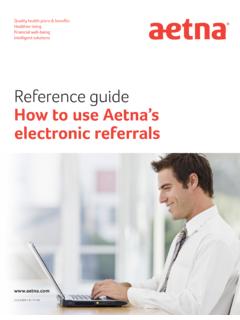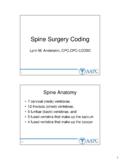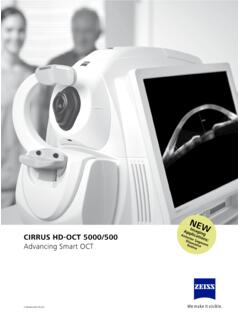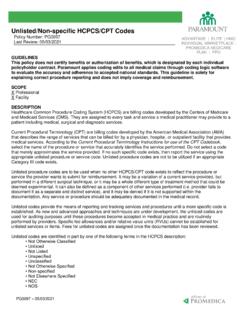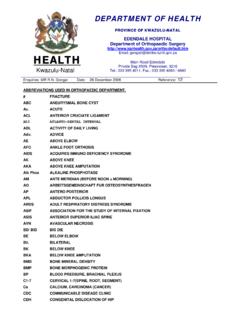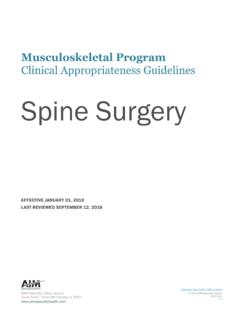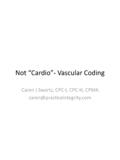Transcription of MOH Pocket Manual in Emergency
1 MOH Pocket Manual in Emergency MOH Pocket Manual in Emergency3cardiac emergencyCOntents4 MOH Pocket Manual in EmergencycontentContentsChapter 1: Cardiac Emergency : Acute ST Elevation Myocardial Infarction1 . Non ST Elevation Myocardial Infarction. Atrial fibrillation. Bradydysrhythmias. Hypertension. Acute Aortic Syndromes. Deep Venous Thrombosis. Chapter 2: Pulmonary Emergency : Acute bronchial Asthma.
2 Chapter 3 : Neurological Emergency : Headache. Adult Acute Bacterial Meningitis. Chapter 4 :Toxicology: Acetaminophen (Paracetamol, APAP) Overdose. Carbon Monoxide Poisoning. Chapter 5 : Hematological Emergency : Sickle cell disease in Emergency department. Anticoagulation Emergencies.
3 Chapter 6 : Endocrinology and electrolyte Emergency : Hypokalemic and Hyperkalemia Emergencies. Diabetic Emergency . MOH Pocket Manual in Emergency5content Thyroid Storm and Myxedema Coma Chapter 7 : Urological Emergency : Rhabdomyolysis. Acute Urinary Retention. Chapter 8 : Trauma and environmental: Severe Traumatic Brain Injury.
4 Electrical Injuries. Heat injury. Chapter 9 : Medications List 6 MOH Pocket Manual in Emergencycardiac emergencyChapterMOH Pocket Manual in Emergency7cardiac emergencyChapterCRADIAC Emergency 18 MOH Pocket Manual in Emergencycardiac emergencyAcute ST Elevation and NonST Elevation Myocardial InfarctionOverviewAcute coronary syndrome involves:1. ST elevation acute myocardial infarction2. Non ST- segment elevation acute myocardial infarction3. Unstable angina (UA).Acute ST elevation myocardial infarction typically occurs when a clot leads to complete occlusion of a coronary artery with trans mural , or full thickness myocardial infarction.
5 The ECG will show ST segment elevation in the involved area of the ST- segment elevation acute coronary syndromes (NSTE-ACS) refers to a disease process characterized by reduced coronary blood flow resulting in coronary ischemia without ST- segment elevations on an electrocardiogram (ECG).NSTE-ACS include both non ST- segment elevation acute myo-cardial infarction (MI), as defined by positive biomarkers for MI, and unstable angina (UA), as defined by negative Pocket Manual in Emergency9cardiac emergencyClinical Presentationo History Chest pain, when it started, what it feels like (stabbing, crushing, pressure, aching), and if it radiates to other parts of the body. Jaw/shoulder/ neck/arm pain. Dizziness, nausea. Shortness of Physical Examination Hemodynamic stability, signs of heart fail-ure/left ventricular dysfunction. Exclusion of noncardiac and nonischemic cardiac causes requires a thorough examination of the pa-tient s chest wall including inspection and pal-pation as well as careful examination of cardiac and pulmonary Pocket Manual in Emergencycardiac emergencyDifferential diagnosiso Heart Acute coronary syndrome Pericarditis Myocarditis Endocarditis Valvular disease o Lungs Pulmonary embolus Pneumothorax Pneumonia Empyema Hemothorax COPD o EsophagusEsophagitis GERD Spasm Foreign body Rupture (Boerhaave s) Esophegeal Tearo Work up CBC.
6 Electrolytes. Coagulation studies. Cardiac enzymes. ECG. Cardiac Pocket Manual in Emergency11cardiac emergencyManagement o Prehospital Care: Three goals: (1) Delivering patients to an appropriate health care facility as quickly as possible.(2) Preventing sudden death and controlling arrhythmias by using acute cardiac life support (ACLS) protocol when necessary.(3) Initiating or continuing management of patients during inter-facility transport. Checklist to get from the EMS team includes the fol-lowing information:1. The person who initiated EMS involvement (patient, family, bystander, transferring hospital) and Complaints at the Initial vital signs and physical examination results, as well as notable Therapies given prior to arrival and the patient s ECGs done at an outside hospital or en route, noting the context in which notable ECGs were Pocket Manual in Emergencycardiac emergency6. The patient s code status (if known).
7 7. Family contacts for supplemental information and family mem-bers who may be on their way to the ED, as they may be help-ful in completing or verifying the hospital care for STEMI: Assess and stabilize airway, breathing, and circulation. Do ECG. Provide oxygen; attach cardiac and oxygen saturation monitors; establish IV access. Treat arrhythmia rapidly according to ACLS protocols. Give aspirin 162 to 325 mg (non-enteric coated), to be chewed and swallowed (allergy to aspirin is an abso-lute contraindication) . Give three sublingual nitroglycerin tablets ( mg) one at a time, spaced five minutes apart if patient has per-sistent chest discomfort, hypertension, or signs of heart failure and there is no sign of hemodynamic compro-mise and no use of phosphodiesterase inhibitors, infe-rior MI with right ventricular extension. Give morphine sulfate (2 to 4 mg slow IV push every 5 to 15 minutes) for persistent discomfort or Pocket Manual in Emergency13cardiac emergencySelect reperfusion strategy: Primary percutaneous coronary intervention (PCI) strongly preferred, especially for patients with cardio-genic shock, heart failure, late presentation, or contrain-dications to fibrinolysis.
8 Treat with fibrinolysis if PCI unavailable within 90-120 minutes, symptoms <12 hours, and no contraindications Give antiplatelet therapy (in addition to aspirin) to all patients: Patients treated with fibrinolytic therapy: Give clopidogrel loading dose 300 mg if age less than 75 years; if age 75 years or older, give loading dose of 75 mg. Give anticoagulant therapy to all patients: Unfractionated heparin:-For patients undergoing primary PCI, we suggest an initial in-travenous (IV) bolus of 50 to 70 units/kg up to a maximum of 5000 units. -For patients treated with fibrinolysis, we suggest an IV bolus of 60 to 100 units/kg up to a maximum of 4000 units and for pa-tients treated with medical therapy (no reperfusion) an IV bolus 14 MOH Pocket Manual in Emergencycardiac emergencyof 50 to 70 units/kg up to a maximum of 5000 units. -Both should be followed by an IV drip of 12 units/kg per hour (goal aPTT time of to 2 times control or approximately 50 to 75 seconds).
9 Disposition Admit to ICUIn hospital care for NSTEMI:o Management High-risk patient:: Early invasive-1. Discuss with Clopidogrel 300 mg or GPIIb/IIIa Prompt PCI. Not high-risk patient:-Early conservative :Clopidogrel 300 Pocket Manual in Emergency15cardiac emergencyDisposition Admit to Alert Sudden onset of severe pain. Occurring during exercise. Lasting longer than 15 minutes. Associated with shortness of breath. Nausea/vomiting and sweating. Radiation to left arm or jaw. In case of inferior myocardial infarction , you must do Right side and Posterior ECGs to rule out Right ven-tricular or Posterior MI .16 MOH Pocket Manual in Emergencycardiac emergencyAtrial Fibrillation: Management StrategiesOverviewo Cardiac causes: Mitral valve disease. Myocardial disease. Conduction system disorders. Wolff-Parkinson-White syndrome. Pericardial associated with AF include: Thyrotoxicosis. Hypothermia. Alcohol use. Severe infection.
10 Hypoxia. Pulmonary emboli. Pneumonia. Kidney disease. Obesity. Diabetes mellitus. Digoxin toxicity. Electrolyte abnormalities. Intrathoracic surgery , such as cardiac or pulmonary surgery , or invasive cardiac Pocket Manual in Emergency17cardiac emergencyAtrial Fibrillation is categorized as follows: First detected episode. Recurrent (after two or more episodes). Paroxysmal (if recurrent AF terminates spontaneously). Persistent (if sustained beyond 7 days). Clinical Presentationo History Anxiety, palpitations, shortness of breath, dizziness, chest pain, or generalized fatigue. Medications and alcohol and drug Examination Vital signs. Oxygen saturation. Evidence of thyroid disease (eg, exophthal-mos and enlarged thyroid). Evidence of deep vein thrombosis/pulmonary embolus ( , unilateral lower extremity swelling or tenderness). The cardiac evaluation: rate, rhythm, and the presence of heart Pocket Manual in Emergencycardiac emergencyDifferential diagnosisRhythm Atrial Frequency,beats/min Ventricular Frequency,beats/minP-wave Sinustachycar-dia100-180100-180 Precedes everyQRS complex Atrialfibrillation400-600irregu- ,60-190larly irregularAbsent Atrialflutter250-350regu- ,75-150 lar, sometimes alternatingblockSawtoothAtrioven- tricular nodal reentranttachycar-dia180-250180-250 In QRS complex((R Atrialtachycar-dia120-25075-250 Precedes QRS; P-wave differsfrom sinus P-waveMultifo- cal atrialtachycar-dia100 <100 <or more dif- 3 ferent P-wave morphologies atdifferent ratesMOH Pocket Manual in Emergency19cardiac Emergency Atrialfibrilla- tion withWolff-Parkinson- Whitesyndrome400-600 with ,180-300 wide, bizarreQRS com-plexesAbsentWork up Electrocardiogram.))
